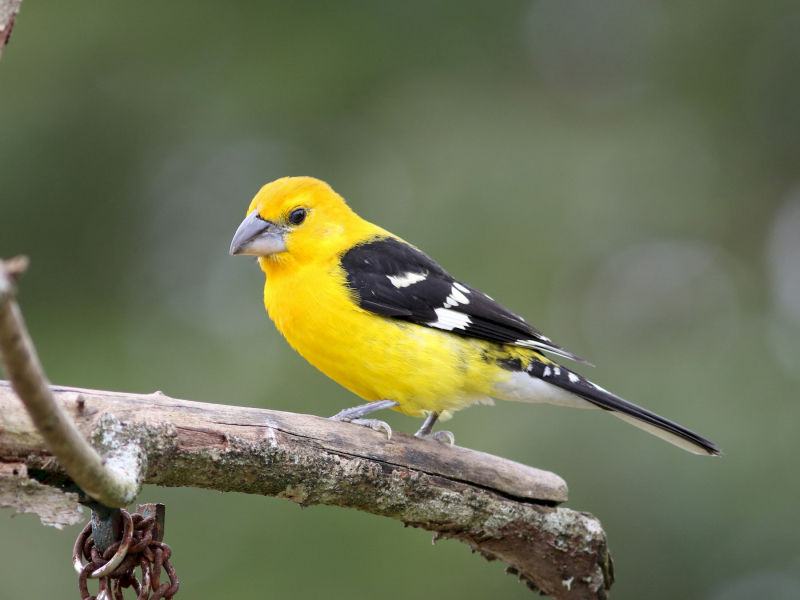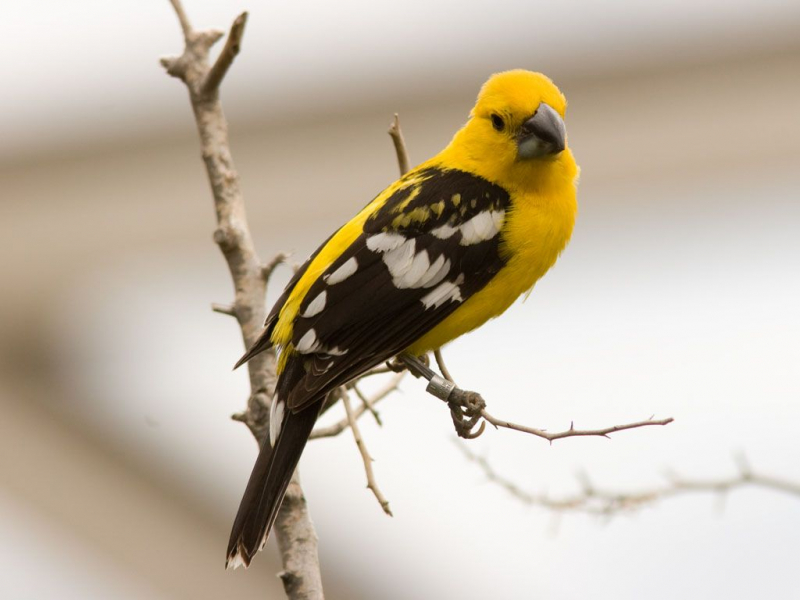Mexican Yellow Grosbeak
The Yellow Grosbeak (Pheucticus chrysopeplus), also known as the Mexican Yellow Grosbeak, is a medium-sized seed-eating bird in the same family as the northern cardinal. The yellow grosbeak can be found in southern Chiapas and Guatemala as well as on the Pacific slope of Mexico from central Sonora to northwest Oaxaca. It migrates through Sonora. The majority of its occurrences are in trees in forests, woodlands, and edges; it is typically absent from dense rain or cloud forests.
The yellow, white, and black or gray colors of the plumage contrast sharply. In most populations, the head and underparts of males are a solid pale yellow. The top tail coverts are black with white tips, the rump is yellow, and the back is black with yellow mottling. There are noticeable white markings, patches, and wine bars on the black wings and tail. Similar in appearance, females have darker streaks on the head and back and more olive upper parts. The white markings on the wings, notably the white base of the primaries, are reduced and replaced with gray instead of black. Females have a pattern that is very similar to that of flame-colored tanagers, but they are significantly larger, especially in terms of the bill. Overall, immatures resemble females.












